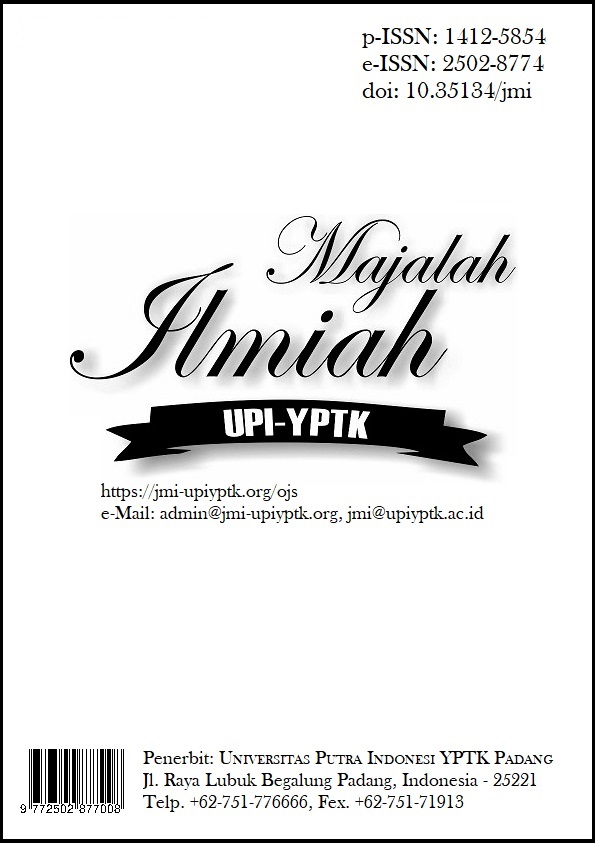A Build Dynamic Instructional Leadership untuk Peningkatan Kualitas Pengajaran Bahasa Mandarin di Era New Generation AI Development Melalui Model Pendidikan Holistic Terintegrasi Technical Knowledge, Social Wisdom dan Ethics
DOI:
https://doi.org/10.35134/jmi.v32i1.178Keywords:
Instructional Leadership; Mandarin Language; AI; Holistic Education.Abstract
This community service program aims to strengthen instructional leadership among Mandarin language teachers in facing the challenges of the New Generation AI era. Through an integrated holistic education model that combines technical knowledge with social wisdom and ethics, the program focuses on enhancing the quality of Mandarin language teaching in line with current technological advancements. The training is designed to equip teachers with the ability to integrate AI-based instructional tools, develop adaptive teaching strategies, and maintain cultural and ethical values in the learning process. The implementation involves several stages, including needs analysis, training sessions, mentoring, and evaluation, with active participation from teachers as primary partners. The expected outcomes include improved teacher competence in designing innovative and ethical AI-based Mandarin teaching, increased student engagement, and the creation of a sustainable professional development network among Mandarin language teachers. This initiative not only contributes to the professional growth of teachers but also supports the broaderReferences
J. P. Spillane, Distributed Leadership. San Francisco: Jossey-Bass, 2006.
K. Leithwood, K. Seashore Louis, S. Anderson, and K. Wahlstrom, How Leadership Influences Student Learning. New York: The Wallace Foundation, 2004.
J. A. Hattie, Visible Learning: A Synthesis of Over 800 Meta-Analyses Relating to Achievement. London: Routledge, 2009.
Z. Q. Zhang, “Artificial intelligence in language education: Opportunities and challenges,” Journal of Educational Technology Development, vol. 16, no. 2, pp. 45–62, 2020.
H. Gardner, Frames of Mind: The Theory of Multiple Intelligences, 3rd ed. New York: Basic Books, 2011.
S. R. N. Reis and A. I. Reis, “How to write your first scientific paper,” in 2013 3rd Interdisciplinary Engineering Design Education Conference, IEEE, Mar. 2013, pp. 181–186. doi: 10.1109/IEDEC.2013.6526784.
Y. H. Wang and M. Winstead, “Ethics in artificial intelligence and education,” Journal of AI and Ethics, vol. 2, no. 1, pp. 55–72, 2021. doi: 10.1007/s43681-021-00034-5.
UNESCO, Education in a Post-COVID World: Nine Ideas for Public Action. Paris: UNESCO, 2020.
G. Li and W. Chen, “AI-powered personalized learning in Mandarin education,” International Journal of Educational Research and Innovation, vol. 15, pp. 120–138, 2021. doi: 10.5281/zenodo.4567890.
X. Liu, “Integrating social wisdom into AI-driven education,” Computers & Education: Artificial Intelligence, vol. 3, pp. 100–112, 2022. doi: 10.1016/j.caeai.2022.100045.
D. Goleman, Emotional Intelligence: Why It Can Matter More Than IQ. New York: Bantam Books, 2006.
J. Dewey, Democracy and Education: An Introduction to the Philosophy of Education. New York: Macmillan, 1916.
C. Dede, “Immersive interfaces for engagement and learning,” Science, vol. 323, no. 5910, pp. 66–69, Jan. 2009. doi: 10.1126/science.1167311.
OECD, AI in Education: Challenges and Opportunities. Paris: OECD Publishing, 2021. doi: 10.1787/ai-edu-2021-en.
M. Prensky, “Digital natives, digital immigrants,” On the Horizon, vol. 9, no. 5, pp. 1–6, 2001. doi: 10.1108/10748120110424816.
Downloads
Published
How to Cite
Issue
Section
License
Copyright (c) 2025 Majalah Ilmiah UPI YPTK

This work is licensed under a Creative Commons Attribution 4.0 International License.






